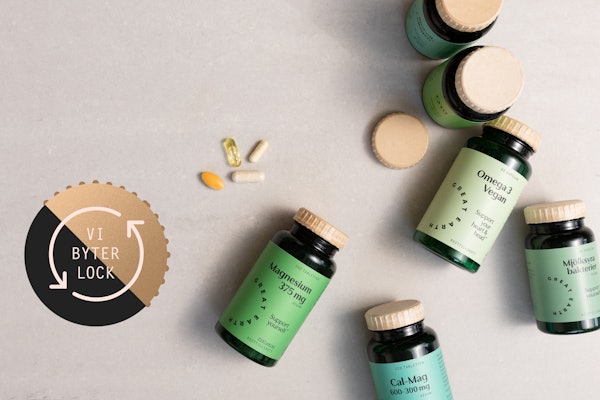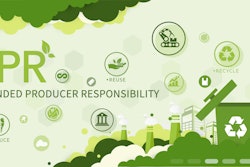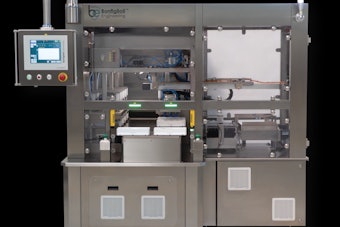Accelerated aging tests help medical device manufacturers bring products to market faster. These test results are acceptable for initial product introduction, as long as real age testing is in progress. The problem is, there are no clear and concise standards for testing materials. ASTMF1980 Standard Guide for Accelerated Aging of Sterile Medical Device Packages is a guide, not a test method.
Why is aging or dating claim verification needed? Many devices contain materials or components, batteries for instance, that have a finite shelf life. Expiration dates can force stock rooms and warehouses to move "first in, first out." And, sometimes a date is simply a marketing tool used to remove older designs from the field.
There is no expiration date for sterile packaging. As long as unusual stress or shock, punctures or improper sealing do not compromise sterility, a package can last a long time. But can the sterile package survive accelerated aging? Heat is used to simulate time, yet some device manufacturers use temperatures that are too high. One thermoformer said the company received complaints about trays that had warped or melted during age testing, learning that trays were exposed to 190-degree temperatures for prolonged time periods.
Often high humidity is introduced as well. This is a real problem, according to Curt Larsen, DuPont consultant. High humidity can accelerate a chemical reaction, such as corrosion, far beyond what would be predicted with increased temperatures. It can also modify characteristics of a material. "Humidity should be kept ambient during elevated temperature accelerated aging tests," Larsen said.
"It is also crucial to know your supply chain," added Mike Scholla, DuPont's senior consultant for medical packaging. "If your product is going to sit in a warehouse for three years, then be shipped, you had better conduct shipping tests after accelerated aging to make sure the 'older' package can survive drop tests."
Do you know where your packages are?
Unlike consumer packaging where actual user tests are extensive, medical device manufacturers often do no field testing whatsoever, and have no idea how the package is used once it arrives at the hospital receiving dock.
"Of the 6,000 or so registered manufacturers of medical devices in the U.S., less than 400 know what happens to their package after shipping," said DuPont's Mike Scholla. "You should be aware that some devices are used under different conditions in the same hospital, let alone around the world," he noted.
One medical device supplier told HCP that years ago it produced a medical device tray with a 1/4-inch seal that had repeated failures in one hospital. It eventually discovered the nurses were using a hole punch on the rim of the tray to hang the package from hooks!
Global standards
Efforts to harmonize medical packaging standards around the world are progressing, according to DuPont's Mike Scholla. He told attendees that the Committee for European Normalization (CEN) and ISO 11607 are currently revising standards and hope to release a harmonized version of ISO 11607 by November. Thirteen years in the making, and driven largely by the Association for Advancement of Medical Instrumentation (AAMI), among other organizations, this single global standard will significantly reduce costs for multi-national companies.
"The standard also takes the science up a notch," said Scholla. The next revision, due in 2010, will focus largely on reproducibility and repeatability of test methods.
--By Jim Chrzan, Publisher
Why is aging or dating claim verification needed? Many devices contain materials or components, batteries for instance, that have a finite shelf life. Expiration dates can force stock rooms and warehouses to move "first in, first out." And, sometimes a date is simply a marketing tool used to remove older designs from the field.
There is no expiration date for sterile packaging. As long as unusual stress or shock, punctures or improper sealing do not compromise sterility, a package can last a long time. But can the sterile package survive accelerated aging? Heat is used to simulate time, yet some device manufacturers use temperatures that are too high. One thermoformer said the company received complaints about trays that had warped or melted during age testing, learning that trays were exposed to 190-degree temperatures for prolonged time periods.
Often high humidity is introduced as well. This is a real problem, according to Curt Larsen, DuPont consultant. High humidity can accelerate a chemical reaction, such as corrosion, far beyond what would be predicted with increased temperatures. It can also modify characteristics of a material. "Humidity should be kept ambient during elevated temperature accelerated aging tests," Larsen said.
"It is also crucial to know your supply chain," added Mike Scholla, DuPont's senior consultant for medical packaging. "If your product is going to sit in a warehouse for three years, then be shipped, you had better conduct shipping tests after accelerated aging to make sure the 'older' package can survive drop tests."
Do you know where your packages are?
Unlike consumer packaging where actual user tests are extensive, medical device manufacturers often do no field testing whatsoever, and have no idea how the package is used once it arrives at the hospital receiving dock.
"Of the 6,000 or so registered manufacturers of medical devices in the U.S., less than 400 know what happens to their package after shipping," said DuPont's Mike Scholla. "You should be aware that some devices are used under different conditions in the same hospital, let alone around the world," he noted.
One medical device supplier told HCP that years ago it produced a medical device tray with a 1/4-inch seal that had repeated failures in one hospital. It eventually discovered the nurses were using a hole punch on the rim of the tray to hang the package from hooks!
Global standards
Efforts to harmonize medical packaging standards around the world are progressing, according to DuPont's Mike Scholla. He told attendees that the Committee for European Normalization (CEN) and ISO 11607 are currently revising standards and hope to release a harmonized version of ISO 11607 by November. Thirteen years in the making, and driven largely by the Association for Advancement of Medical Instrumentation (AAMI), among other organizations, this single global standard will significantly reduce costs for multi-national companies.
"The standard also takes the science up a notch," said Scholla. The next revision, due in 2010, will focus largely on reproducibility and repeatability of test methods.
--By Jim Chrzan, Publisher


















